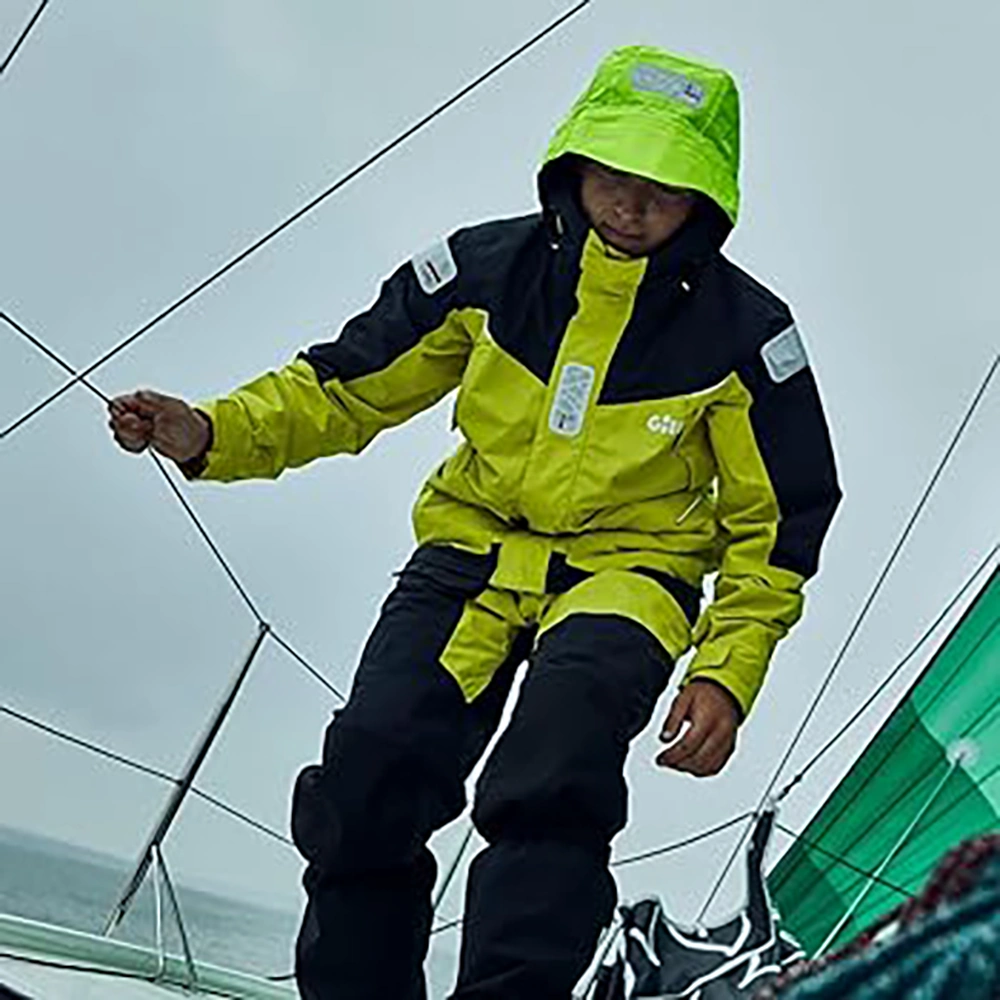
It’s the middle of the night on the open ocean. The pitch-black darkness is pierced only by an occasional glimpse of the moon as clouds race past. The wind is howling over the deck, firing up jets of icy seawater that sting your face. The cold and damp air feels like it’s seeping into every layer of your being. Yes, it’s the night watch in gnarly weather, and it can be a test not just of your physical endurance but also of your resolve. This is when the right offshore sailing jacket is a godsend. It is the barrier between you and the relentless assault of the elements. Its waterproof exterior repels the icy cold rain and sea and shields you from the wind that leeches away your body heat. Sure, a good offshore sailing jacket may be expensive, but it is a culmination of advanced materials and design for which you will be enormously grateful when you’re on that watch! Here, we talk you through what to look for in an offshore foul-weather jacket, how to care for them, and what we reckon are the best sailing jackets in 2024.
Criteria for Choosing the Best Offshore Sailing Jackets
A good jacket for offshore cruising is designed with several key features to ensure maximum protection and comfort in harsh marine environments. These features include:
- Waterproof and Breathable Material: The jacket is typically made from high-quality, waterproof materials that prevent water penetration. This includes technologies like GORE-TEX or other similar fabrics. The material is also breathable, allowing moisture from the body to escape, which is crucial in maintaining comfort during physical activity.
- Windproofing: Given the high winds encountered at sea, offshore jackets are designed to be windproof, protecting the wearer from the chilling effects of the wind.
- Insulation: Insulation is important, especially in colder environments. Some jackets feature built-in insulation, while others are designed to be layered with additional insulating garments underneath.
- High Collar and Hood: A high collar protects the neck area, while a fully adjustable high visibility hood can shield the head and face from wind and rain. The hood is often designed to be compatible with a helmet and may have a reinforced brim.
- Sealed Seams and Waterproof Zippers: To prevent water ingress, the seams are fully sealed, and the zippers are waterproof, usually with a double storm flap. This ensures that no water can seep through the joints and openings of the jacket.
- Adjustable Cuffs and Hem: Adjustable cuffs and hem help to secure the jacket around the wrists and waist, preventing water and wind from entering.
- Pockets and Storage: Practical storage options, including cargo pockets, fleece hand warmer pockets, chest pockets, and secure inner pockets, are important for keeping essential items accessible and dry.
- Reflective Elements: For safety, especially during night sailing, reflective elements are often incorporated to make the wearer more visible.
- Durability and Reinforcement: Key areas, like the shoulders and elbows, are often reinforced to withstand the wear and tear of offshore conditions.
- Ergonomic Design and Articulation: The cut and design of the jacket are ergonomic, allowing for freedom of movement, which is essential for sailing activities.
- Drainage: Good offshore jackets often have built-in drainage to let out any water that gets in.
- Safety Features: Some jackets may include safety features such as attachment points for a harness, built-in life jacket, or personal locator beacon
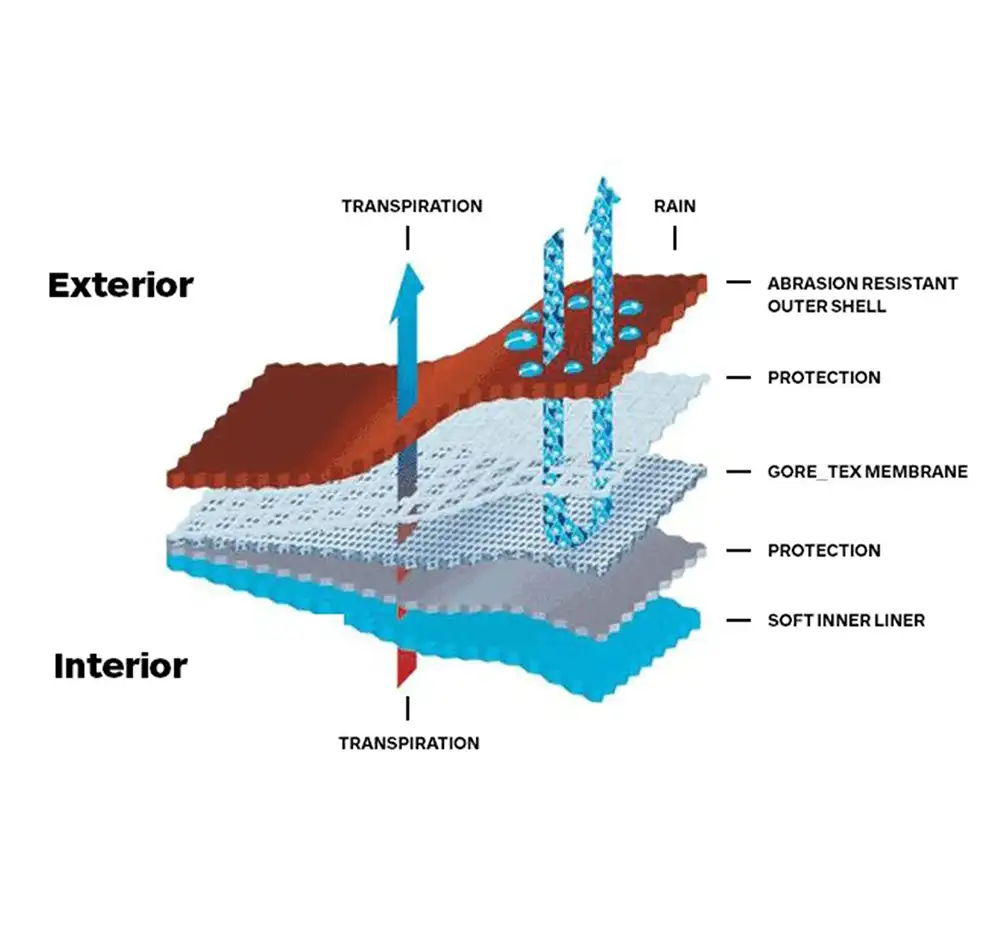
Our top Offshore Sailing Jackets of 2024
Helly Hansen Skagen Offshore Sailing Jacket
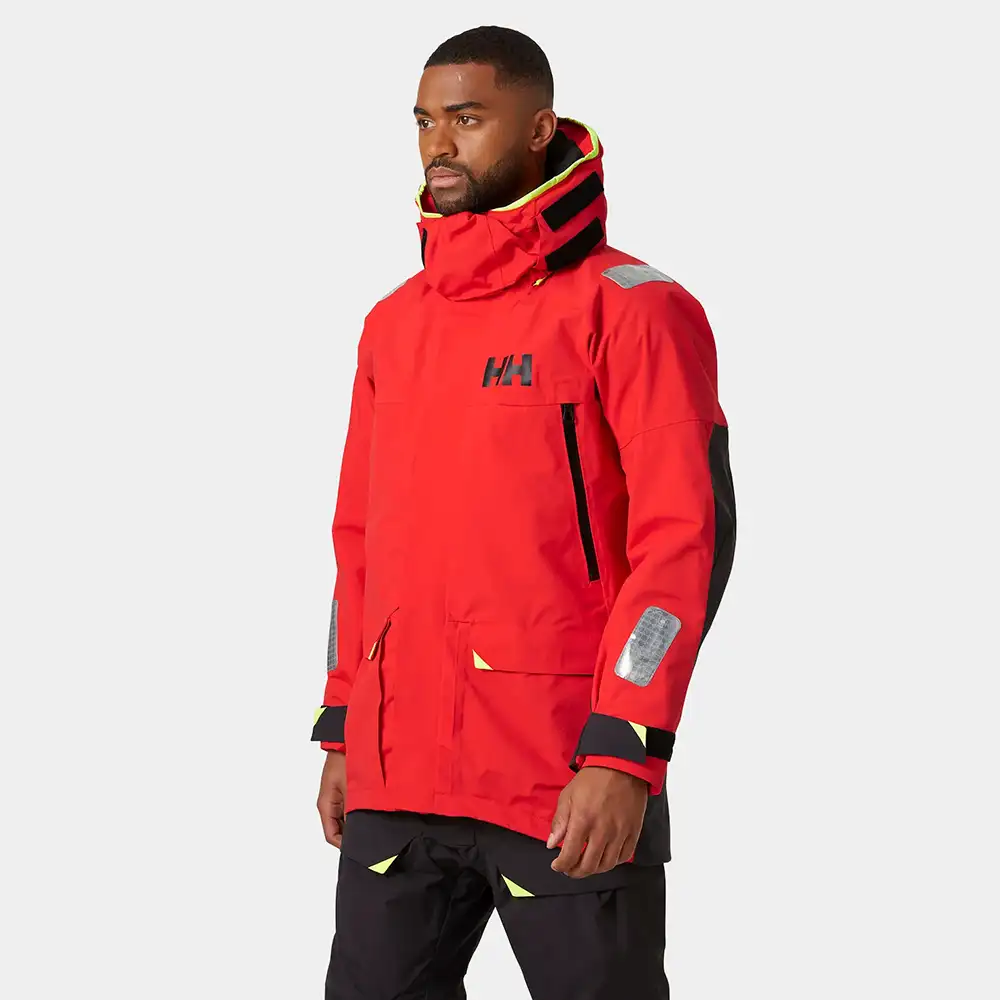
We do love Helly Hansen gear, even though it’s pricey. The Skagen Offshore Sailing Jacket has all the features you’d expect with a tough outer shell of Cordura outer fabric, a quick-drying mesh lining, and an adjustable hood, face shield, hem, and cuffs, meaning it will keep you warm and dry whatever your body size. The pockets are a good size and properly shaped. This jacket now features recycled material, with the original material taken from coastal regions at higher risk of plastic pollution. It’s a great jacket and initiative that helps win our Best Offshore Sailing Jacket 2024.
RRP: $375
Zhik OFS700 Jacket
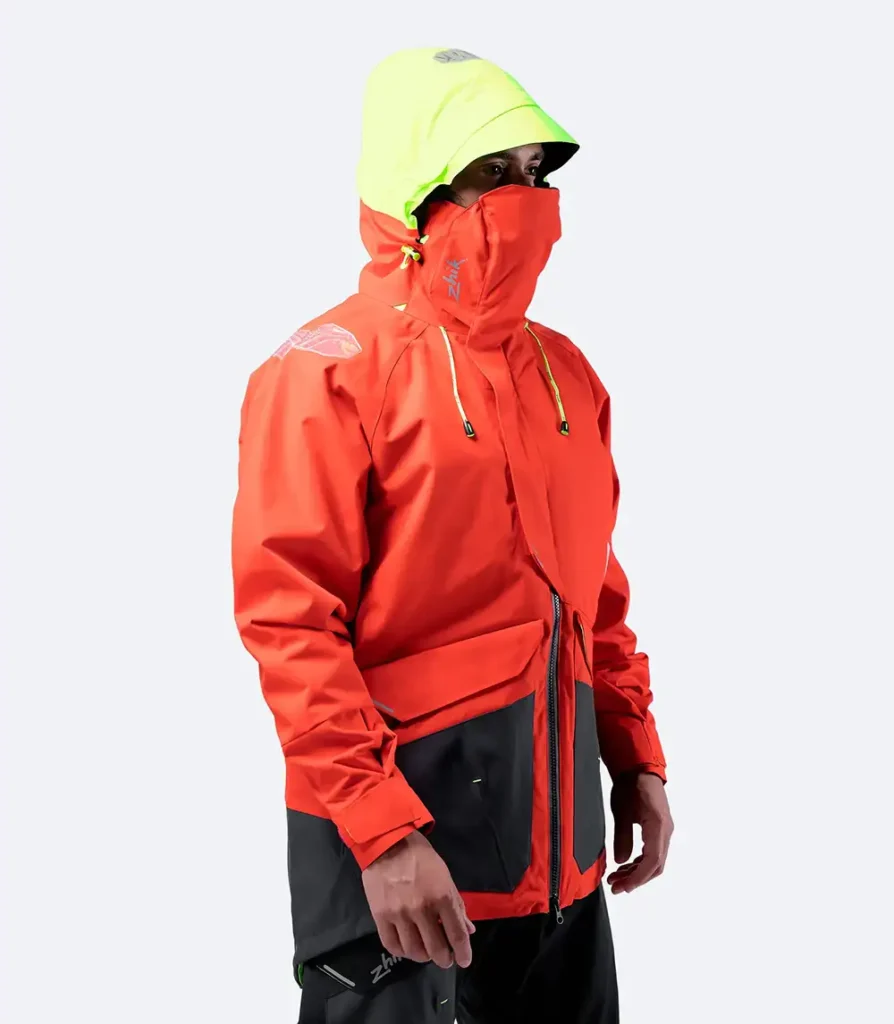
We love this jacket, and Zhik certainly makes some top-quality wet-weather gear. It has all the features you’re looking for, with a well-cut hood, face guard, and sleeves, giving excellent protection and mobility. It has the best face guard, allowing you to feel almost totally protected from the rain and wind as it drives horizontally across the deck. Wear and tear are significant factors for pro sailors, so we particularly love this jacket’s extra reinforced patches and the reinforced tail. A very close second due to no mention of it being made from recycled materials, which is a must these days.
RRP: $430
GILL OS2 Jacket
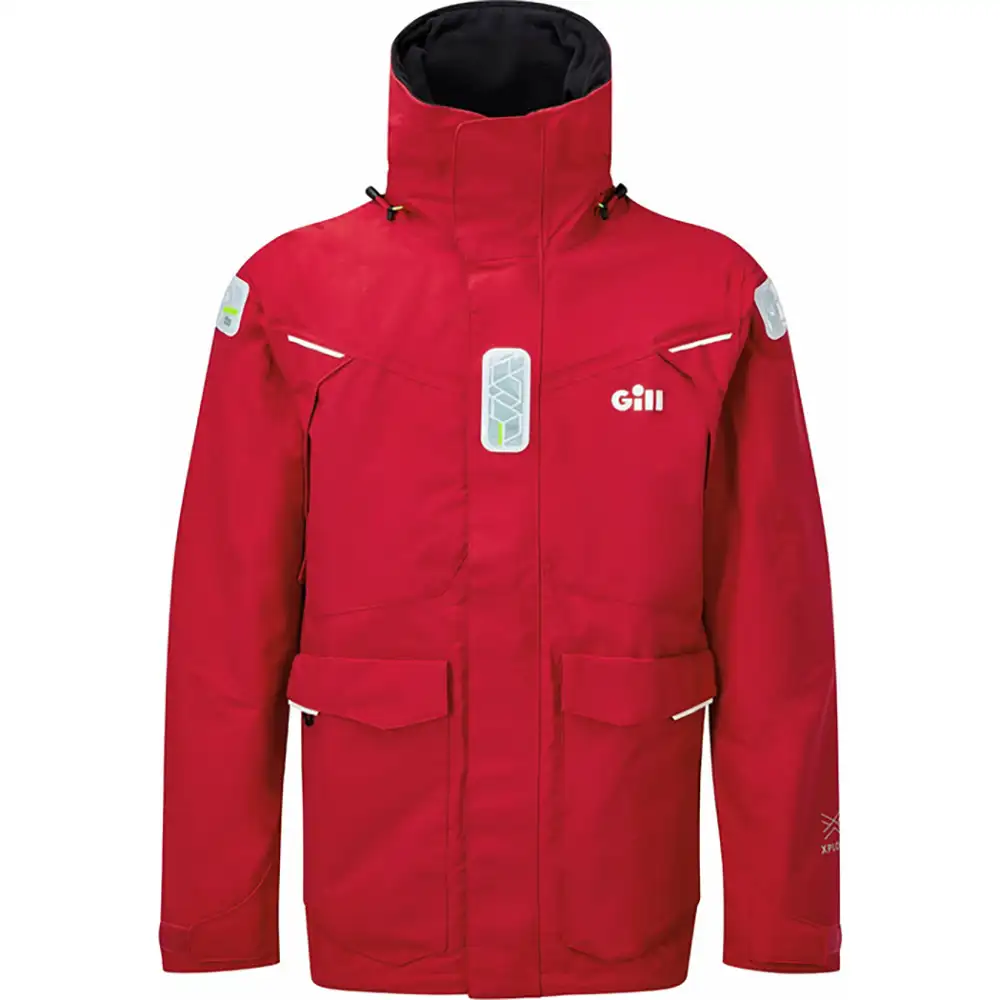
Another long-term favorite of ours is another jacket with all the features you’d expect from a top-named offshore sailing jacket with a much admired high fleece-lined collar, deep fleece-lined pockets, and PU inner seals on its storage pockets. It’s not quite as sturdy as Helly Hansen’s Skagen, and it doesn’t have as much reflective material, which is so essential should you fall in at night. Gill claims this jacket is now 98% made from reclaimed plastic bottles and recycled fibers, which is an incredible achievement.
Decathlon Tribord Sailing Jacket Offshore 900
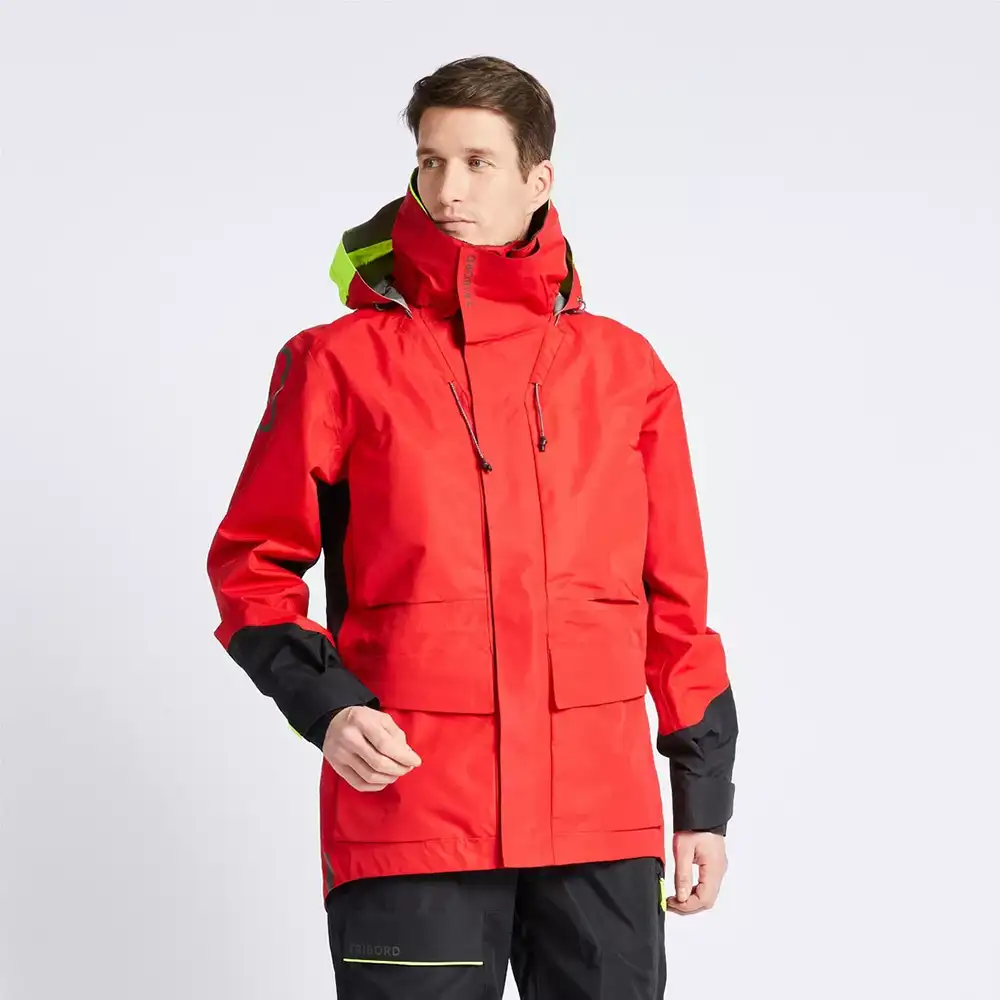
This jacket is really competitively priced but still does a good job onboard. The cut is awkward at times, meaning you don’t have the same feeling of protection as you get from the pricier jackets, but for most sailors, it will give more than enough. It has less reflective tape than we would like. At this price, it’s an excellent option for many.
RRP: $175
Technical Innovations for Offshore Sailing Jackets in 2024
The technology and design of sailing jackets have seen remarkable advancements during 2023 and into 2024, reflecting a blend of innovation, functionality, and comfort tailored to the demanding conditions of the sea. These advancements focus on enhancing safety, durability, and wearability, catering to the diverse needs of a broad range of sailors.
- Smart Fabric Technologies: It may not be long until sailing jackets incorporate smart fabrics that adapt to changing environmental conditions. Already under development in leading universities, these materials can alter their properties for better insulation in cold weather or increased breathability in warmer conditions. Some fabrics even have self-healing capabilities, repairing minor tears automatically.

- Improved Waterproofing and Breathability: Advanced membrane technology in 2024 has led to even more efficient waterproof yet breathable fabrics. This ensures that water from the outside doesn’t penetrate while allowing sweat and moisture from the body to escape, keeping sailors dry and comfortable.
- Ergonomic Design and Mobility: Designers for 2024 have focused on ergonomic features, ensuring that jackets allow maximum mobility without compromising protection. This includes articulated sleeves, adjustable hoods and cuffs, and strategically placed pockets for easy access while maneuvering on deck.
- Sustainability and Eco-Friendly Materials: There’s a growing trend towards using recycled materials and environmentally friendly production processes. Jackets made from recycled plastics and sustainable materials are becoming more prevalent, appealing to environmentally conscious sailors.
- Lightweight and Compact Design: Despite the increased functionality, 2024’s sailing jackets are more lightweight and compact than ever before. See the North Sail jackets for great performance and ultra-light material. This makes them easy to wear for prolonged periods and convenient to store when not in use without sacrificing any protective features.
Care and Maintenance Tips for Offshore Sailing Jackets
- Proper care and maintenance of offshore sailing jackets are essential to ensure their longevity and optimal performance. Here are some tips for cleaning, storing, and inspecting these specialized garments:
- Cleaning
-
- Read Manufacturer’s Instructions: Always refer to the manufacturer’s care instructions. Different materials may require specific cleaning methods.
- Rinse with Fresh Water: After each use, especially in saltwater, rinse the jacket with fresh water to remove salt, dirt, and other residues that can degrade the fabric over time.
- Use Gentle Detergents: When washing, use a mild detergent and avoid bleach or fabric softeners, as they can damage the waterproof coating or breathable membrane.
- Hand Wash or Gentle Cycle: Hand wash or use a gentle machine cycle. Avoid aggressive spin cycles, which can damage the jacket.
- Air Dry: Always air dry the jacket away from direct sunlight or heat sources. High heat can damage waterproofing and other technical features.
- Storing
-
- Dry Completely Before Storing: Ensure the jacket is completely dry before storing to prevent mold and mildew growth.
- Hang or Fold Properly: Hang the jacket on a wide, padded hanger, or fold it gently without compressing it too much, especially if it has a built-in flotation device or padding.
- Inspecting for Wear and Tear
-
- Regular Checks: Regularly inspect your jacket for signs of wear and tear, especially in high-friction areas like cuffs, collars, and zippers.
- Seams and Sealing Tapes: Check the seams and sealing tapes for any peeling or cracks. These are critical areas that ensure the jacket’s waterproof integrity.
- Waterproofing: Periodically check the waterproofing by sprinkling some water on the jacket. If water stops beading and starts to soak in, it may be time to reapply a waterproofing treatment.
- Repairing Damage
-
- Prompt Repairs: Address any damage as soon as possible. Small tears or seam issues can often be repaired at home with repair tapes or patches designed for technical fabrics.
- Seasonal Maintenance
- End-of-Season Overhaul: At the end of the sailing season, give your jacket a thorough clean, dry it and give it a thorough inspection before storing it away. This helps catch any issues and ensures the jacket is ready for the next season.
In Summary
For many sailors, a cheaper coastal sailing jacket will give you everything you need. It’s tempting to think the best sailing jacket may be the most expensive, but it’s not the case. A straightforward coastal jacket for day sailing will be lighter and cheaper, and you’ll have far fewer concerns if it rips or tears. If you’re ocean racing or sailing in extreme conditions or colder climates, spend a little more on an ocean jacket. The offshore sailing jackets of 2024 are a remarkable fusion of technology, sustainability, and practical design. Whether braving the rigors of the open sea or enjoying a leisurely sail, the right jacket is a mixture of price, fit, and functionality. From the rugged durability of the Helly Hansen Skagen to the eco-conscious construction of the GILL OS2, each jacket brings its unique strengths to the forefront. The jackets of 2024 are perfectly equipped to meet these challenges for offshore sailors.